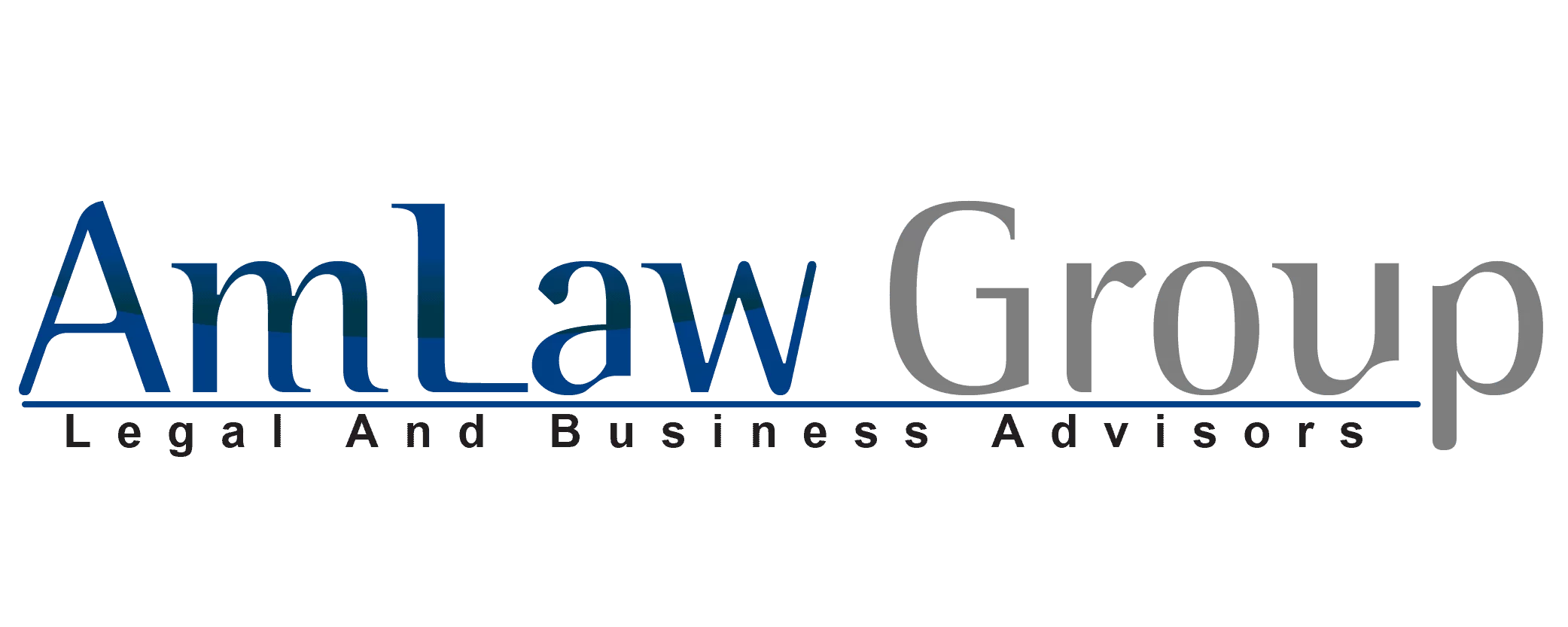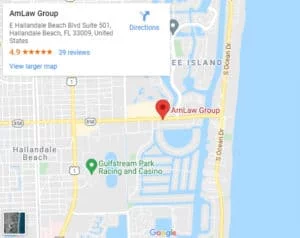How to Prove the Lawful Source of Funds for your EB-5 Visa Application: A Comprehensive Overview
Securing your EB-5 investor visa requires proving the lawful origin of your funds. Clients regularly underestimate the challenges related to proving the source of funds being invested in the EB-5 project. However, clients do so at their own peril: this issue is far and away the primary reason for denials.This guide delves into the five most popular lawful sources and the specific documentation you’ll need to collect with your attorney for each of these sources in order to ensure a smooth application process and approval from USCIS.
Introduction: The Importance of Lawful Source of Funds
Securing your EB-5 visa hinges on demonstrating the legitimate origin of your investment funds. The EB-5 program mandates that foreign investors meticulously document the lawful source of any funds used to invest in a U.S. new commercial enterprise (NCE), regardless of whether they are investing in a project or business in a targeted employment area or rural area ($800,000) or project outside these areas where the minimum investment amount is $1,050,000.
To ensure compliance, the United States Citizenship and Immigration Services (USCIS) requires specific supporting documents as proof of lawful acquisition of the funds. This task is complicated by the fact that USCIS often changes its criteria for proving the source of funds as well as the banal fact that officers significantly vary between themselves as to how they apply these requirements.
Therefore, when preparing supporting materials for the I-526 petition for conditional permanent residence under the EB-5 program, investors must be prepared to provide comprehensive documentation proving the lawful source of all funds being invested. This is deemed to include the required investment amount as well as the admin fees charged by the regional center, if relevant. One should remember that there is no such thing as a statute of limitations as to how far back an investor must go back to prove the source of funds. Even if the source is related to earnings or events that occurred ten or twenty years ago–or even more–the investor will be required to prove their ultimate origin.
Proving Lawful Source of Gifted Funds
Gifted funds can be used for the EB-5 investment and associated costs, but proving the lawful source of the investment capital is crucial. To demonstrate this, EB-5 applicants must submit specific documentation related to the gift and how the gifter received the funds it is giving to the investor.
1. Capital Source Documentation:
- The gifter must provide the same detailed information regarding the origin of the gifted funds as if he were in fact the investor.
- Therefore, one should refer to the other sections of this article describing the most common sources of funds and how to prove them to learn what will be required of the gift giver. For example, if the gifter earned the funds from the sale of real estate, then he will need to provide the same documents as would be required from an investor who derived his funds from the sale of real estate.
2. Documentation of the Gift Transaction:
- The gift must be legally documented pursuant to the laws of the country in which the gift was effected. Therefore, issues as to the wording of the gift instrument, who needs to sign it, whether there need to be witnesses or whether the document should be notarized, is all controlled by the laws of the country where the document was executed. This principle (of what country’s legislation controls) is true even in cases where the recipient is in the United States (which is commonly the case when a parent gifts funds to a child studying in the U.S.). An added benefit of this scenario is that no taxes are payable by a recipient in the U.S. (regardless of the recipient’s immigration status in the U.S. at the time) on gifts made from aboard by non-residents. The investor must submit bank statements evidencing receipt of the gifted funds from the gifter. In addition, it would be strongly recommended to also include the bank statements of the donor showing the deduction from his account of the funds.
3. Income Tax Returns or Declarations:
- Both the investor and the giftor should provide personal tax returns for the past seven years.
- If the tax returns or other related documents are unavailable, a declaration from a tax professional in the investor’s home country, explaining the absence of records and detailing the source of funds, may be accepted. The exact content of this declaration would need to be coordinated with your EB-5 attorney to ensure that it properly addresses the issues in question.
4. Additional Documents for Specific Fund Sources:
- If the gifted funds originated from asset sales (stock, real estate), proof of sale and purchase records will be required.
This comprehensive documentation for the capital invested ensures transparency and facilitates a smooth EB-5 visa application process for investors utilizing gifted funds.
Proving Lawful Source of Earned Salary
To demonstrate the lawful source of funds of salary payments for the initial investment capital immigrant investors must submit specific documentation related to how they received their salaries:
- Capital Source Statement: A detailed statement outlining how the investment amount was accumulated through received salary. This includes employer information, salary records, and bank statements confirming receipt of the salary.
- Employment Verification: The investor’s employment contract and an income certificate from the employer, corroborating the salary information in the capital source statement.
- Personal Tax Returns (or Declaration): Personal income tax returns for the past seven years are now required, but investors from countries without income tax systems can submit a declaration from a tax professional explaining the situation and providing the required financial details.
One should note that this is the documentation required in the event of using salary earned from a company that does not belong to the petitioner (or a close relative). If the petitioner is an owner of the company, then the petition will likely need to provide all of the needed documentation generally required when using company earnings or dividends as the source of funds (see below).
Proving Lawful Source of Business Proceeds
Investors can utilize proceeds from their business (either dividends from their business or proceeds from the sale of their business) to fulfill the EB-5 investment and associated costs, but demonstrating the origin of these investment funds is crucial. To properly document the source of funds when using funds from the investor’s business or businesses, the following documents must generally be included in their I-526 petition:
- Proof of Original Capital Source: This is generally the most challenging part of using one’s business. USCIS is indifferent whether you opened your business even 20 years ago: they want all of the details demonstrating where you derived the funds to open the business or purchase your interests in it. This entails bank statements going that far back as well as other documents to prove how you acquired the initial capital to launch your business. For example, if you had saved up earnings from your salary at a company where you previously had worked, then you must provide all the documentation indicated in the other section in this article describing proving the source of funds when using your salary.
- Proof of Stock Purchase Funds: If you instead bought shares of an existing company, then you would need full documentation demonstrating the lawful source of the funds used to purchase the stock. This may include employment records, property sale records, bank statements, or other relevant documents.
- Business Activity Documentation: You must provide evidence about the actual ongoing activities of the company to show it is engaged in legal activities. This could include sample contracts, marketing materials, and other documents that reflect the actual activities of the company. both the written purchase and sale contracts for the stock, along with any share transfer agreements that trace the stock’s ownership journey from the initial owner to the investor and then to the eventual buyer.
- Personal and Business Tax Returns: Individual tax and company tax returns from the past seven years are now required. In addition, the investor should provide profit and loss statements of the company for at least that period of time during which the company accumulated funds used to pay the dividends (In the instance of the sale of the business, the needed financial statements might vary a bit). However, investors from countries without income tax systems can submit a declaration from a tax professional explaining the legal conditions regarding taxation in that jurisdiction and provide other financial details that reflect the company’s operations and demonstrate that the company had adequate income to pay dividends. As with any other category, bank statements from the company and investor are also needed to show the exact path of funds from the company’s account to the investor’s account.
By presenting this comprehensive documentation, investors utilizing their personal businesses as their lawful source pave the way for a smooth EB-5 visa application process.
Proving Lawful Source of Real Estate Proceeds
Investors relying on real estate sale proceeds for their EB-5 investment must provide clear documentation to demonstrate the lawful origin of these investment funds for the new commercial enterprise. This includes:
- Capital Source Statement: The investor must prove not only how he received the sale proceeds, but he must also provide first-hand documentation demonstrating how he acquired the funds to purchase the real estate. Again, here too USCIS is generally indifferent how long in the past this occurred and will generally require all detailed source of funds documentation and bank statements to prove this.
- Property Transaction Documents: Provide both the purchase and sale contracts for the real estate.
- Proof of Ownership and Tax Compliance: Supply an ownership certificate and relevant tax certificates to verify the property’s legal owner.
- Personal Tax Returns (or Declaration): Submit individual income tax returns for the past seven years is required as with any other source of funds. However, in certain circumstances, such as the lack of access to certain documents due to the passage of time, USCIS may accept a declaration from the investor or a tax professional explaining the situation and providing the necessary financial details.
Tracing the origin of investment funds beyond the real estate itself may be necessary in some cases. For example, if the property was gifted, a gift letter and capital source statement from the donor would be required. Similarly, if salary was used to purchase the real estate, additional documentation like employment records and bank statements would be needed.
Proving Lawful Source of a Loan as Investment Funds
Demonstrating the lawful source of loan-based EB-5 investment funds requires specific documentation. While not all documents may be applicable in every case, here’s what’s generally required:
Loan Details:
- Written Loan Agreement: Specify interest rate, secured assets, and repayment period. Generally there is significant flexibility about the repayment details as long as the loan is more or less on market terms. For example, in order to avoid having to explain where the investor will source the funds to pay interest on the loan, we structure the loan payments to be payable after the EB-5 funds are expected to be returned. Similarly, the interest rate can generally be set to a relatively low level and not necessarily a market rate.
Proof of Loan Proceeds:
- Bank Statements: Show receipt of loan funds entering your account.
Lender’s Source of Funds (if an individual):
- Same Evidence as Required from Investor: If the lender is an individual, then he would be subject to the same requirements as if he were the investor to prove the source of his funds. Therefore, if an investor is considering a loan from a friend or relative, it is important to determine in advance that this person will not have problems proving the source of his funds.
In the event of using a financial institution as the lender, the situation is much simpler for all sides. As long as no collateral is involved in the loan, neither side needs to provide any source of funds documentation (USCIS reasons that a financial institution is in the day-to-day business of lending funds. Therefore they do not request from the bank documentation proving where they acquired their funds from). Thus, although it can be sometimes difficult to arrange, acquiring a loan without collateral from a bank is the easiest way of sourcing funds for an EB-5 investment.
Loan Collateral:
- Avoid Use of Collateral: We generally advise clients to avoid using collateral for the loan regardless of whether it’s from an institution or private individual. This avoids the requirement of proving the source of funds for the collateral.
If it is not possible to acquire the loan without collateral, then the investor must prove the source of funds of the property being provided as collateral. Thus, in this case the burden on the investor may not be lightened at all by using the loan since he is obligated to provide all source of funds details on the collateral.
Remember, USCIS considers all submitted documents holistically to assess the lawful origin of investment funds. Providing thorough and accurate documentation helps streamline your EB-5 application process.
Conclusion:
Please note that these are only general recommendations. Moreover, these recommendations are not intended to be all-encompassing: there are many other documents required for a proper EB-5 petition. The specific requirements for your particular case would depend on various circumstances related to your situation, source of funds, and other factors. For these reasons a consultation with an experienced EB-5 attorney is crucial to navigate the complex documentation requirements and ensure compliance with the program’s requirements.
The consequences of not properly following the program’s requirements can lead to not only a denial of your EB-5 petition, but also other negative consequences affecting your status in the U.S. or future plans of traveling here. For that reason we strongly recommend signing up for a consultation with one of our top-rated EB-5 attorneys to go over your particular circumstances and formulate a successful strategy for you and your family.

Ask A Business Immigration Lawyer
Start your new future now!

Miami Office
AmLaw Group
1920 E Hallandale Beach Blvd Suite 709 Hallandale Beach, FL 33009
Dreaming of Living in the U.S.? Our Business Immigration Attorneys Can Help!
Copyright 2025 AmLaw Group - All Rights Reserved | Powered by Advantage Attorney Marketing & Cloud Solutions




